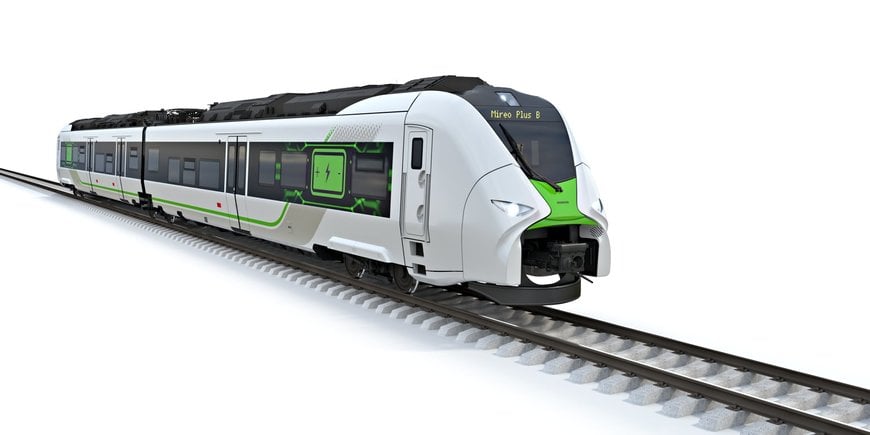railway-international.com
01
'20
Written on Modified on
Totally fit for the future – Mireo Plus B
Diesel multiple units are a thing of the past, at least according to Jochen Steinbauer. As Director of Development for Alternative Drives at Siemens Mobility, he’s in charge of the Mireo Plus platform and has participated in the development of both the hydrogen- and battery-powered versions. In an interview, he talks about the strengths of battery-powered trains, what the developments are that will revolutionize the market in the near future, and what sets Mireo Plus B apart from the competition.

Mr. Steinbauer, what’s the Mireo Plus B’s current stage of development?
Simply put, its ready for the market! The Mireo Plus B’s traction battery system is fully developed. We’ve tested the system extensively and implemented a preliminary version on a prototype train, the Cityjet eco in Austria. It was successfully tested for an entire year, which has allowed us to accumulate a wealth of experience and knowledge. We’ve achieved a level of maturity that prepares us for further projects.
What were your experiences with test operation?
Most importantly, we determined that the battery technology that we’ve opted for is extremely robust. The lithium-ion titanate cells that were used barely aged during two years of test operation. Nor were there any problems due to fluctuations in ambient temperature, which are sometimes considerable when operating in the Alps. We were very pleasantly surprised.
What’s the current market demand for battery-powered trains?
The market for battery-hybrid trains is booming and has developed relatively quickly. With the project in Ortenau, we were also able to secure our first order for the Mireo Plus B. This is mainly because the battery-powered train is relatively close to the electric multiple unit. Basically, the only additions are the battery and power electronics, otherwise we have the same powerful Mireo. We’re currently processing several offers.
The Cityjet eco was tested in Austria. What use cases are there for battery-powered trains in general? Will they replace diesel multiple units?
There are two use cases on the market. The first is a battery-powered train with a lower power dissipation for operating on sections that would otherwise be covered by diesel multiple units. It can be used as a direct replacement. Battery-powered trains with a more powerful drive system that can also cover longer sections without an overhead line have wider areas of application, such as interconnecting sections from regional and mass transit for example.
How far is the Mireo Plus B’s range?
In a three-part, maximum configuration, the range is between 100 and 120 kilometers. For the Cityjet eco in Austria, we initially made very conservative estimates of 30, and then 50 kilometers. But in the practical test, we noticed that the operators were covering an average of 80 kilometers in daytime operation using battery power. Based on this empirical knowledge, the Mireo Plus B might realistically be able to cover an average of 100 kilometers, but it depends on the section.
What rail networks is the Mireo Plus B most suitable for?
Primarily track sections that are already partially electrified. Sections that cover distances of between 40 and 130 kilometers without an overhead line are ideal for the Mireo Plus B, but rail networks that include longer stretches without electrification are more suitable for our Mireo Plus H. Once fully fueled with hydrogen, it can cover a distance of up to 1,000 kilometers.
How is battery technology progressing in general?
We’re currently using batteries that have lithium titanate as their anode material, which has significant benefits in terms of reliability. They also age less quickly than batteries used in conventional electric cars that have graphite as their anode material. But battery cells are currently under development that use a new anode material, titanium niobium oxide batteries. They have the same footprint with twice the capacity and also charge much more quickly. So the maximum range of our Mireo Plus B without an overhead line could even double towards the end of the decade.
www.mobility.siemens.com

